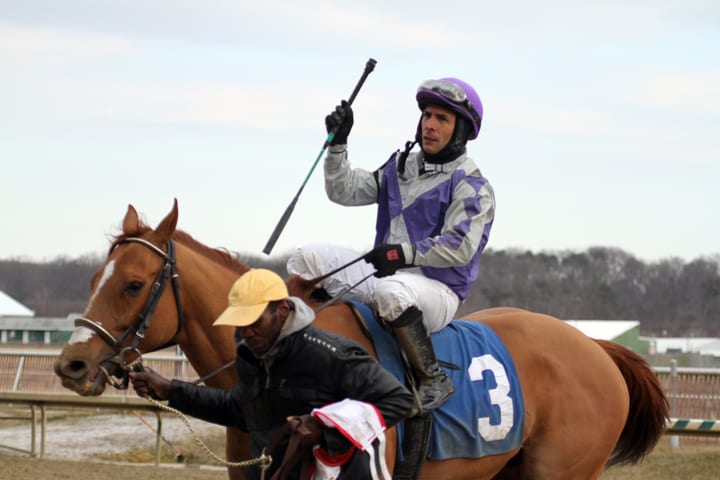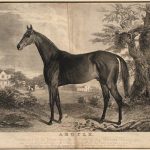
Maryland – which adopted a 10-strike of the riding crop rule in January – will be among the Mid-Atlantic’s first states to adopt new rules tightening that limit.
The new rule would limit jockeys to no more than six overhand strikes of the crop inside the quarter-pole, with no more than two of those in succession (thus requiring the jock to give the horse a chance to respond). It would allow riders to use underhand strikes of the whip outside of the quarter-pole.
The proposal was approved Thursday at the Maryland Racing Commission’s meeting and will be implemented as a stewards’ directive – similar to Maryland’s current riding crop rule – until a schedule of penalties is developed and the package can be adopted as a regulation.
Commission Executive Director Michael Hopkins said the new rule came from a lengthy regional process designed to ensure that it “would have the consensus for the Mid-Atlantic area.”
Hopkins said several other states – among them Pennsylvania, Delaware, Virginia, and West Virginia – have made a commitment to adopt similar rules. Regional uniformity of rules is important because riders and horses commonly run at tracks all over the region.
“That’s good because jockeys go back and forth,” said Commissioner Konrad Wayson. “It could get confusing.”
Under Maryland’s current rules, jockeys are limited to 10 strikes of the crop. Those who exceed that limit are slapped with $500 fines. In February – the last month for which Commission rulings are available online – four jockeys ran afoul of the 10-strike rule.
Hopkins said that the new rule is not intended to eliminate crop use. Instead, he said, it’s to “provide enough control for the rider [and to] reduce overhand strikes of the whip.”
Whip use became something of a hot-button issue after some three dozen horses died in a three-month period at Santa Anita Park. The Stronach Group, which owns Santa Anita as well as Maryland’s Laurel Park and Pimlico, pushed for much tighter regulation of the use of the whip.
The company also helped form the Thoroughbred Safety Coalition, a group comprised of several racetrack operators and Breeders’ Cup, Ltd. The Coalition also calls for tighter riding crop rules, although its website does not specify what those rules might be.
The California Horse Racing Board has, in response to encouragement from The Stronach Group and others, recently adopted stricter rules that those proposed in Maryland. The new California rule limits jockeys to six strikes of the whip, all of which must be done in an underhand fashion.
That stricter rule is more in line with what The Stronach Group would like to see, said the company’s Senior Vice President for Racing Steve Koch. As a result, despite what he lauded as the “really amazing progress” the Mid-Atlantic is making, “We are opposed to these rules,” Koch said.
That created a strange-bedfellows situation, as the Jockeys’ Guild’s Mindy Coleman said her group, like The Stronach Group, opposed the proposed Maryland rule. Unlike The Stronach Group, however, her group also opposes the California proposal.
“We must remember it’s the jockeys’ lives” on the line, Coleman told the Commission. She said her group had not been involved in the crafting of the California or Mid-Atlantic rules, though Hopkins said the group which drafted the local crop rule did consult with individual jockeys.
Thursday’s meeting also featured some testy discussion of The Stronach Group’s proposal to limit two-year-old races to those horses running without Lasix – a proposal many horsemen oppose and which the Commission said violates Maryland regulations.
The two spats – particularly process complaints around the two-year-old races proposal – suggest that the comity which has served Maryland’s Thoroughbred industry well in recent years may be fraying. The conflict comes at a time when the industry – already economically battered by the 4ovid-19 pandemic – can ill afford it.
LATEST NEWS














